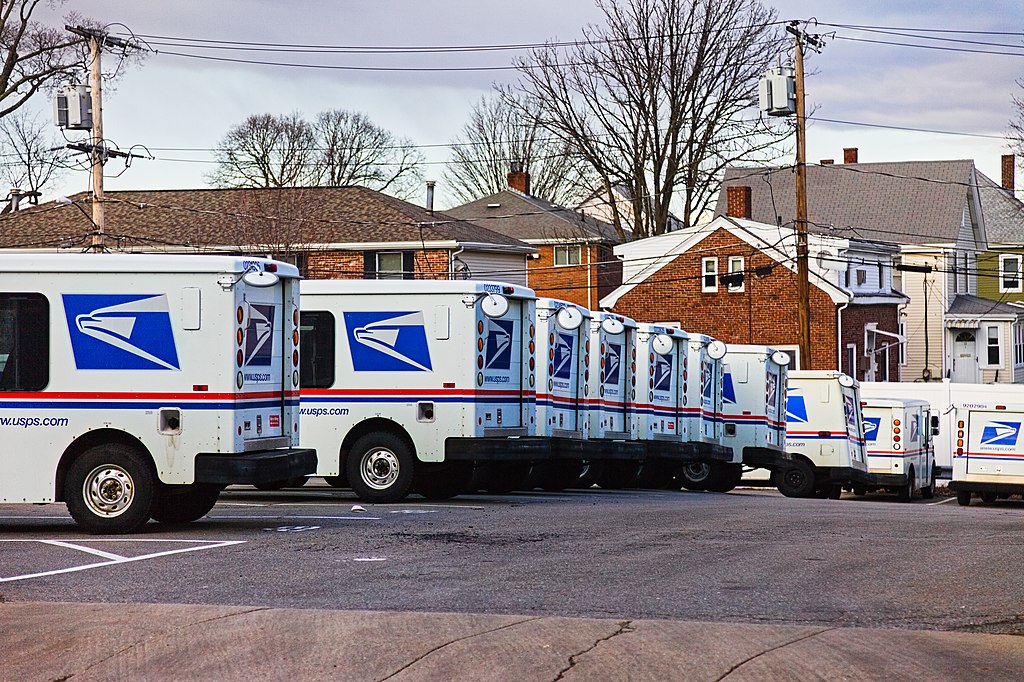As part of a plan to replace its aging fleet of over 220,000 delivery vehicles, the Postal Service will acquire at least 66,000 battery electric delivery vehicles as part of its 106,000 vehicle acquisition strategy through 2028.
The Postal Service says its priority is to provide its carriers and communities with safer, more efficient vehicles as soon as possible. The greening of the fleet is part of the U.S. Postal Service’s overall network modernization efforts, which will cost $9.6 billion, paid for in part by the $3 billion appropriated under the Inflation Reduction Act.
“The $3 billion provided by Congress has significantly reduced the risk associated with accelerating the implementation of a nationwide infrastructure necessary to electrify our delivery fleet,” said Louis DeJoy, Postmaster General. “While most of the electric vehicle funding will continue to come from Postal Service revenues, we are grateful for the confidence that Congress and the Administration have placed in us to build and acquire what has the potential to become the largest electric vehicle fleet in the nation.”
While the initial acquisition will include internal combustion vehicles as necessary to meet immediate vehicle replacement needs, any vehicles delivered from 2026 and beyond are expected to be electric.
“We have a statutory requirement to deliver mail and packages to 163 million addresses six days per week and to cover our costs in doing so – that is our mission,” said DeJoy. “As I have said in the past, if we can achieve those objectives in a more environmentally responsible way, we will do so.”
In February of this year, the Postal Service had committed to at least 10% electric, but in March, 20% of its purchase order from Oshkosh Defense was made up of 20% electric delivery trucks. In July the Postal Service announced its intent to conduct a Supplemental Environmental Impact Statement that anticipated increasing the next-generation delivery vehicles (NGDV) to 40% electric.
By May 2023, the Postal Service intends to publish a draft supplemental environmental impact statement with an assessment of the results of the acquisitions.
“What is less widely understood is that our network modernization initiative is necessary to enable this vehicle electrification and will also provide meaningful cost and carbon reductions in other ways,” said DeJoy. “A key focus of our modernization effort is to reduce inefficient transportation and improve distribution operations, resulting in far less air cargo and far fewer truck trips. When combined with our substantial commitment to the electrification of our delivery vehicles, the Postal Service will be at the forefront of our nation’s green initiatives.”
The announcement did not include estimates in how much the Postal Service will save on not buying gas for its delivery vehicles, nor does it estimate the amount of carbon prevented by using electric vehicles.
Expect mail delivery by electric vehicle to begin in late 2023.
This content is protected by copyright and may not be reused. If you want to cooperate with us and would like to reuse some of our content, please contact: editors@pv-magazine.com.









By submitting this form you agree to pv magazine using your data for the purposes of publishing your comment.
Your personal data will only be disclosed or otherwise transmitted to third parties for the purposes of spam filtering or if this is necessary for technical maintenance of the website. Any other transfer to third parties will not take place unless this is justified on the basis of applicable data protection regulations or if pv magazine is legally obliged to do so.
You may revoke this consent at any time with effect for the future, in which case your personal data will be deleted immediately. Otherwise, your data will be deleted if pv magazine has processed your request or the purpose of data storage is fulfilled.
Further information on data privacy can be found in our Data Protection Policy.